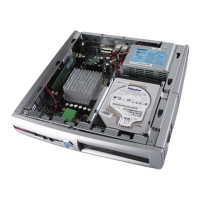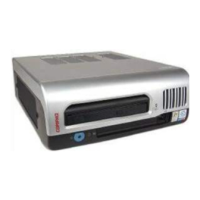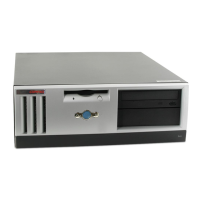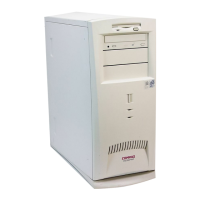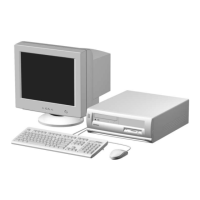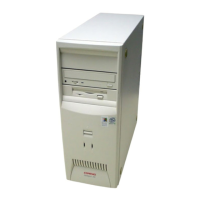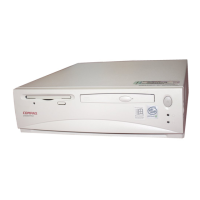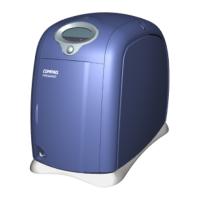Chapter 5 Input/Output Interfaces
5.8 AUDIO SUBSYSTEM
The systems covered in this guide come configured with one of two levels of audio support:
Legacy PC-beep audio support ♦
♦ Embedded AC’97 audio support
5.8.1 FUNCTIONAL ANALYSIS
A block diagram of the audio subsystem is shown in Figure 5-11. Systems without embedded
AC’97 support provide only legacy PC-beep audio and have the speaker (board-mounted on the
Small Form Factor, chassis-mounted on the Desktop EN Slim Desktop/Configurable Minitower)
driven directly by the audio output of the ICH2 as shown in the upper third of the diagram. These
systems may be upgraded by adding a PCI audio card.
Systems with embedded AC’97 audio support use the AC’97 Audio Controller of the 82801 ICH2
component to access and control an Analog Devices AD1885 Audio Codec, which provides the
analog-to-digital (ADC) and digital-to-analog (DAC) conversions as well as the mixing functions.
All control functions such as volume, audio source selection, and sampling rate are controlled
through software over the PCI bus through the AC97 Audio Controller of the 82801 ICH2.
Control data and digital audio streams (record and playback) are transferred between the Audio
Controller and the Audio Codec over the AC97 Link Bus.
Slim Desktop and Configurable Minitower systems implement Business Audio, which has the
codec analog output applied to a 3-watt amplifier that drives a 16-ohm speaker. Small Form
Factor systems feature Premier Sound, which includes a 6-level equalizer that compensates for
chassis acoustics and a low-distortion 8-watt amplifier driving a speaker.
The analog interfaces allowing connection to external audio devices include:
Mic In - This input uses a three-conductor (stereo) mini-jack that is specifically designed for
connection of a condenser microphone with an impedance of 10-K ohms. This is the default
recording input after a system reset.
Line In - This input uses a three-conductor (stereo) mini-jack that is specifically designed for
connection of a high-impedance (10k-ohm) audio source such as a tape deck.
Headphones Out - This input uses a three-conductor (stereo) mini-jack that is designed for
connecting a set of 16-ohm (nom.) stereo headphones or powered speakers. Plugging into the
Headphones jack mutes the signal to the internal speaker and, on SFF systems, the Line Out jack
as well..
Line Out (SFF only) - This output uses a three-conductor (stereo) mini-jack for connecting left
and right channel line-level signals (20-K ohm impedance). A typical connection would be to a
tape recorder’s Line In (Record In) jacks, an amplifier’s Line In jacks, or to powered speakers that
contain amplifiers. Plugging into the Line Out mutes the internal speaker.
5-26 Compaq Deskpro and Evo Personal Computers
Featuring Intel Celeron and Pentium III Processors
Fifth Edition – March 2002
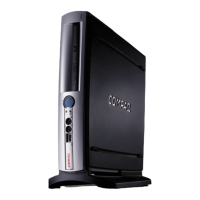
